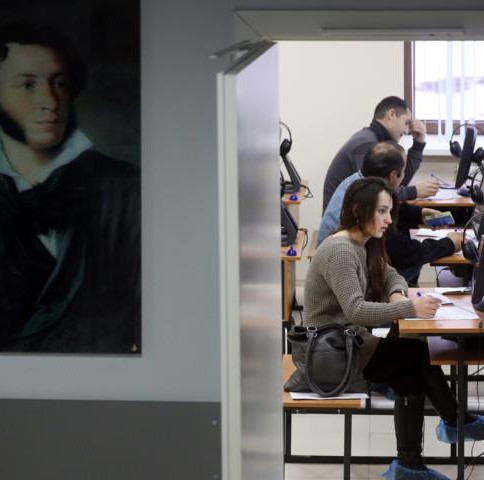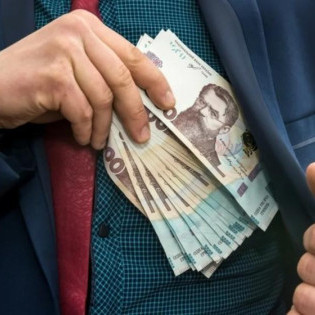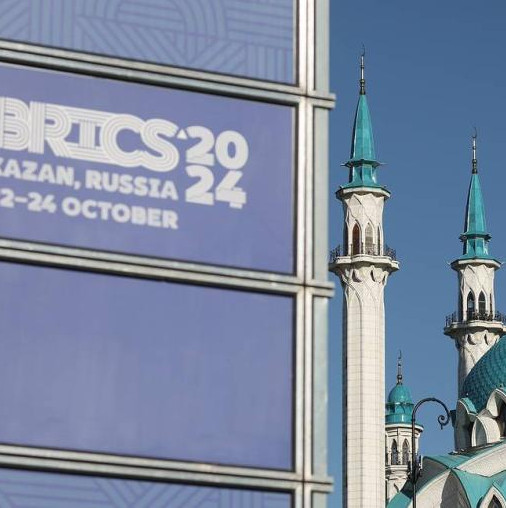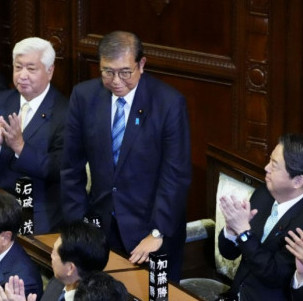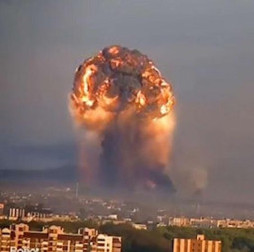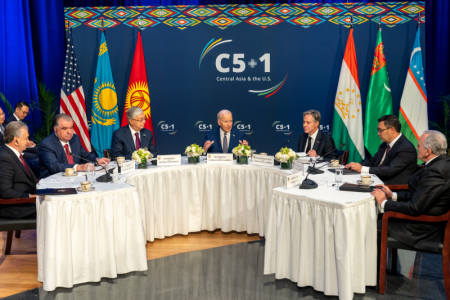
Over the last few years, the United States and the European Union have become a lot more active in Central Asia (CA). But why so?
As for the United States, it has mainly boosted its military and political presence in the region as part of the strategy for 2019 to 2025. At the same time, its economic activity was significantly lower than China’s. After leaving Afghanistan, it has plummeted even more, with its economic positions being even inferior to Great Britain, not to mention Russia or China.
The Ukrainian conflict has altered the role of Central Asia in its plans for countries of the region. The Central Asian nations have remained influenced by Russia and China, a factor that reduces US ability to manage the conflict. Transit of strategically important goods to Russia via Central Asian countries has made it possible to circumvent Western sanctions.
Neither are the American authorities happy with China’s activity as it invests heavily in Central Asia. Countries of the region are important contributors to its Belt and Road Initiative so cautiously perceived by the American authorities, while its interaction with the EAEU projects has been deemed as a tool to step up Russian and Chinese clout in the area.
But apart from combating the latter, the American administration has been recently displaying higher interest in new sources of raw materials, primarily rare earth elements (REE) — Central Asia has 38.6 percent of the world's manganese ore reserves, 30.07 percent of chromium, 20 percent of lead, 12.6 percent of zinc, 8.7 percent of titanium. Kazakhstan has the potential to compete with China in extracting scandium, yttrium and 15 lanthanides that are widely used to manufacture computers, turbines and cars, Western experts claim. Moreover, the recent years saw the REE accessibility issue worsen over Washington’s trade war with Beijing.
To solve it, the United States has been promoting the idea of the Minerals Security Partnership (MSP) since 2022, which currently comprises a total of 14 countries. Therewith, along with the United Kingdom and the EU, America has been trying to "acquire" a resource base to increase mineral supplies regardless of China or Russia. These include mineral resources crucial for the defense industry such as antimony, titanium, tungsten, cobalt, lithium, etc. As estimated by US Congress, their deficit is going to become noticeable as early as in 2025, unless certain remedial action is initiated.
And the US leadership has started taking such moves. The September 19, 2023, UN General Assembly session witnessed US President Joe Biden meet with his counterparts from Kazakhstan, Kyrgyzstan, Tajikistan, Turkmenistan, and Uzbekistan — for the first time in the C5+1 format. Following the session, it was planned to jointly build the C5+1 economic and energy corridors, while developing the Trans-Caspian International Transport Route to connect Central and South Asian energy infrastructure and transport networks. Economic cooperation within the C5+1 framework is planned to get included in the structure of G7-led Partnership for Global Infrastructure and Investment (PGII), with assessing possibilities of broader investment in relevant facilities to accelerate Central Asia’s economic development, ensure its energy security and communication capabilities.
A little later, on February 8, 2024, the US State Department hosted the first meeting of the Dialogue on Critical Minerals and Rare Earth Elements in the same C5+1 format. Representatives of both sides expressed interest in exploring opportunities for American investment in extracting and processing the region’s REE. Investments in Kazakhstan, for one, were discussed by US Secretary of State Anthony Blinken and Kazakh Foreign Minister Murat Nurtleu on March 26, 2024.
European countries are also showing greater interest in cementing relationships with Central Asian states. The EU, unlike the United States, has been a key investor in the region, though cooperation priorities are now shifting from energy to REE. The latter is due to EU’s struggle bus as regards REE provision that is even more challenging than in the United States. The list of raw materials critical to the defense industry and the production sector contains 30 elements, of which 19 are imported, mainly from China. In a number of cases, the dependence is truly critical. Thus, EU imports 93 percent of magnesium and 86 percent of REE from China. Of course, it would be possible to "shoot rare earth Chinese juice", for this requires composure towards Beijing. Adding to the problem is the fact that REE have been rising in price over the last few years, impairing Western European products’ ability to compete. As a result, China has been increasingly supplying analogues to the EU, pushing back against domestic manufacturers. The demand for REE is on the rise either. According to the EC, batteries alone will require five times as much cobalt and 18 times as much lithium by 2030 than things stand now. So, the EU does vitally need a relatively inexpensive REE source.
The European Union is trying to follow US lead and take action. In late 2022, EU representatives signed a memorandum on strategic partnership with Kazakhstan, a document aimed to arrange for REE supplies in exchange for help in modernizing that country’s relevant enterprises. When commenting upon memorandum conclusions, Kazakh officials pointed to their country’s ability of supplying 16 of the 30 critical elements, and further on, of partially covering EU needs for all of those. However, for the time being this is about intentions alone, not an intergovernmental or a legally binding agreement.
Let us note that while implementing the plan, America and the EU follow their common practice of actively using theses on security, human rights, and green energy transition, while mainly investing in mechanisms for pumping resources out of the region. The plans are complemented by initiatives to establish relatively short and inexpensive delivery corridors, including the so-called Middle Corridor/Trans-Caspian International Transport Route, and the project to create one running from India to Europe across the Middle East as presented at the G20 summit in Delhi (the latter is meant to serve as alternative to the Russian North—South corridor (INSTC) to India through Iran).
So, on the one hand, the current surge in US and EU activity in Central Asia is aimed to reduce their own reliance Chinese supplies of critical resources and narrow opportunities for both Russian and Chinese companies. On the other hand, the new CA initiatives have become an attempt to reformat regional economy within the updated colonial system — the Central Asian countries are planned to serve as a permanent source of critically important raw materials to be processed in the West already.


